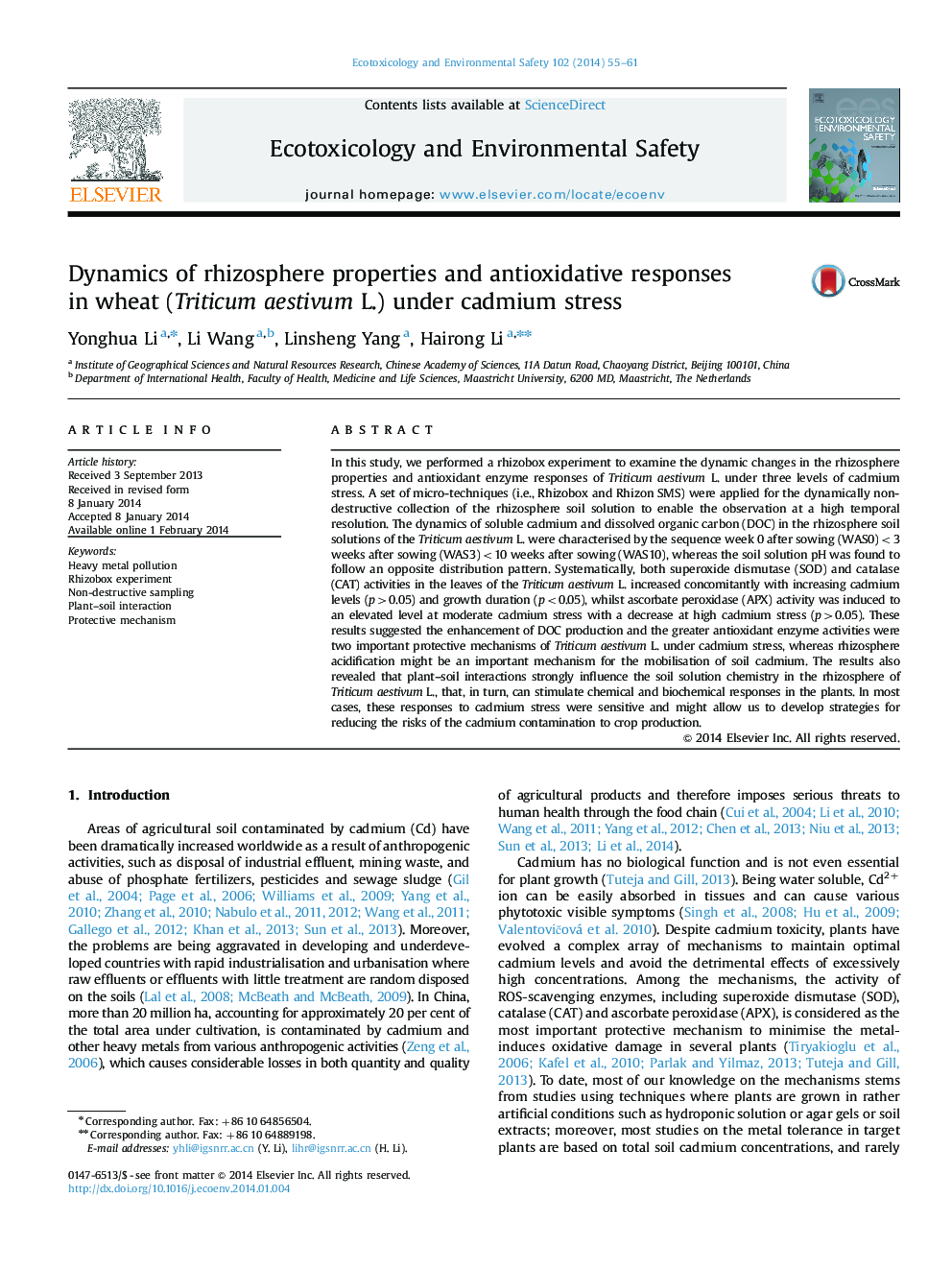| Article ID | Journal | Published Year | Pages | File Type |
|---|---|---|---|---|
| 6312156 | Ecotoxicology and Environmental Safety | 2014 | 7 Pages |
Abstract
In this study, we performed a rhizobox experiment to examine the dynamic changes in the rhizosphere properties and antioxidant enzyme responses of Triticum aestivum L. under three levels of cadmium stress. A set of micro-techniques (i.e., Rhizobox and Rhizon SMS) were applied for the dynamically non-destructive collection of the rhizosphere soil solution to enable the observation at a high temporal resolution. The dynamics of soluble cadmium and dissolved organic carbon (DOC) in the rhizosphere soil solutions of the Triticum aestivum L. were characterised by the sequence week 0 after sowing (WAS0)<3 weeks after sowing (WAS3)<10 weeks after sowing (WAS10), whereas the soil solution pH was found to follow an opposite distribution pattern. Systematically, both superoxide dismutase (SOD) and catalase (CAT) activities in the leaves of the Triticum aestivum L. increased concomitantly with increasing cadmium levels (p>0.05) and growth duration (p<0.05), whilst ascorbate peroxidase (APX) activity was induced to an elevated level at moderate cadmium stress with a decrease at high cadmium stress (p>0.05). These results suggested the enhancement of DOC production and the greater antioxidant enzyme activities were two important protective mechanisms of Triticum aestivum L. under cadmium stress, whereas rhizosphere acidification might be an important mechanism for the mobilisation of soil cadmium. The results also revealed that plant-soil interactions strongly influence the soil solution chemistry in the rhizosphere of Triticum aestivum L., that, in turn, can stimulate chemical and biochemical responses in the plants. In most cases, these responses to cadmium stress were sensitive and might allow us to develop strategies for reducing the risks of the cadmium contamination to crop production.
Related Topics
Life Sciences
Environmental Science
Environmental Chemistry
Authors
Yonghua Li, Li Wang, Linsheng Yang, Hairong Li,
